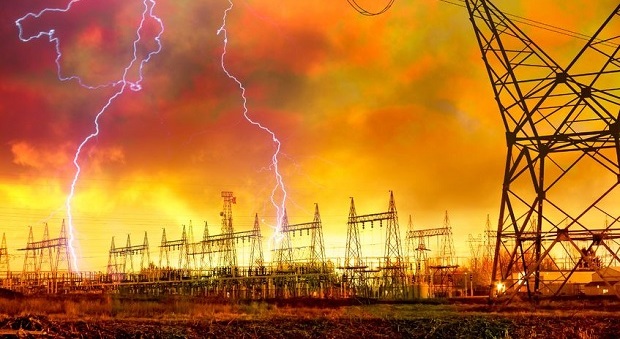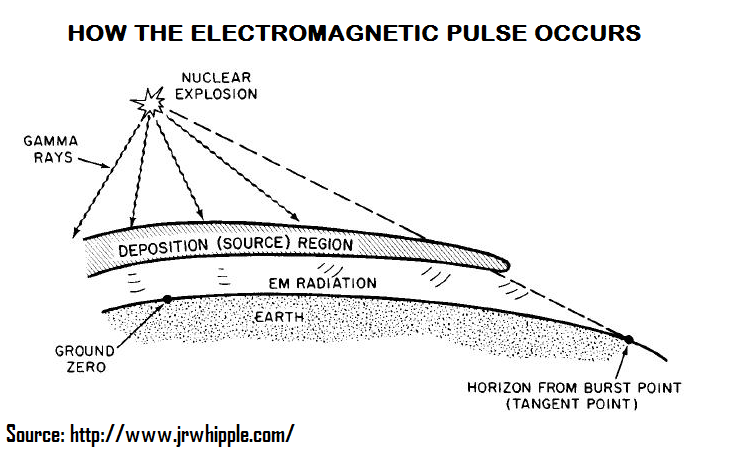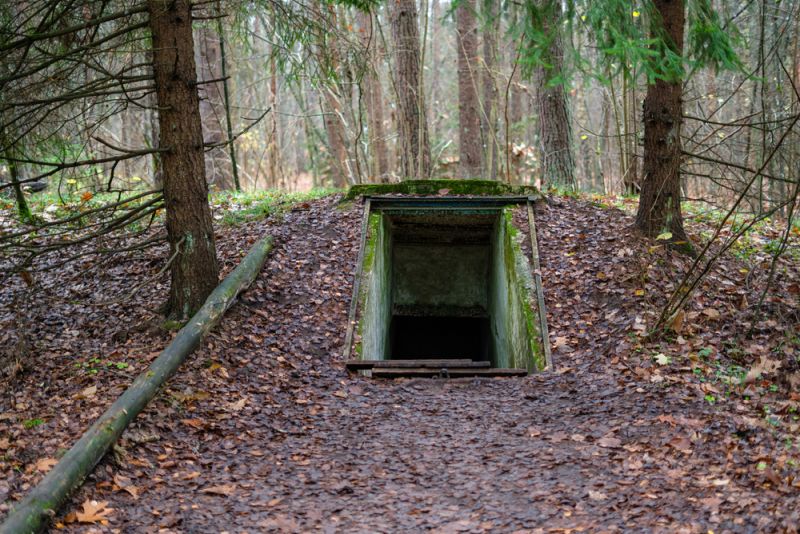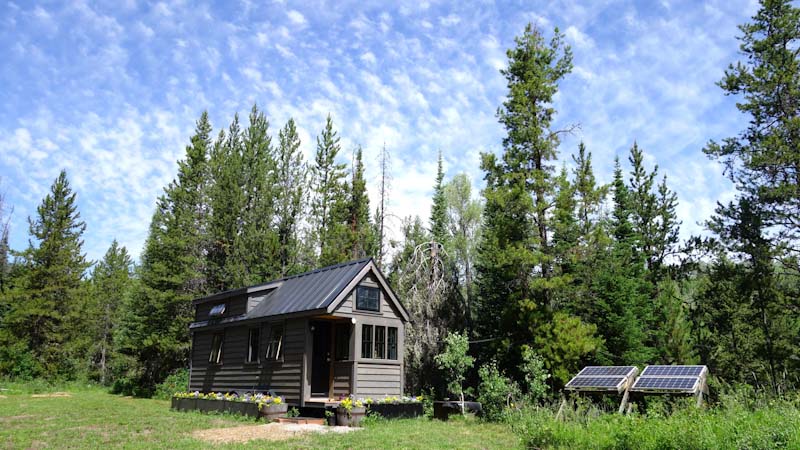Of all our infrastructure, the electrical power grid is the most fragile. In the 2013 Infrastructure Report Card, prepared by the American Society of Civil Engineers, Energy received a grade of D. The only reason it was that high, was that the energy category includes all classes of energy, not just electrical energy.
However, in the narrative, the ASCE described the true condition of the electrical grid, declaring that it needed over one trillion dollars of investment to survive the next ten years.
The problem is that our electrical grid, like much of our infrastructure, was designed for a 50 year lifespan. If you look at the average age of our power plants and distribution network, it’s clear that way too much of it is over well over the halfway point in its lifespan. In fact, there is a considerable amount of it that is still in use, even though it is past its programmed life.
It doesn’t take much to leave us without electrical power. A good snowstorm or thunderstorm will knock down power lines, leaving people without electrical power. Larger storms, like hurricanes can do enough damage to the electrical grid to leave people without electrical power for weeks.
However, that’s a little misleading. The only reason that the damage to the grid is fixed so rapidly in cases like a hurricane is that that power companies send in teams from outside the area to help with repairs. If there was a nationwide event that caused the loss of electrical power, it would take much longer to repair the damage; both due to a lack of crews and a lack of necessary equipment.
When we talk about the grid, we are actually talking about three independent, but interconnected grids. There is an eastern grid, a western grid and the Texas grid. So, taking the grid down actually requires taking three separate grids.
Destruction of the grid, regardless of whether it is by intent or by accident is actually not all that hard to accomplish.
The entire grid is interconnected and to some extent automated. When one part of the grid becomes overloaded by demand or by loss of power production capability, it automatically compensates, bringing in resources from farther away to provide the needed power. Were that to happen enough times, the whole system would become overloaded.
Of course, before that happened the engineers controlling the grid would put emergency procedures into effect, probably cutting off power to certain regions, in order to save the whole. There are probably automated protocols already in the system which would kick into effect automatically.
Experts in the energy industry have said that the entire grid could be taken down, nationwide, by destroying ten specific sub-stations. These ten sub-stations (which for security reasons aren’t mentioned in the open press) are the most critical nodes of the grid. Loss of them would make the rest of the grid non-functional.
So, what sorts of situations could cause a nationwide problem with the power grid, creating a general collapse?
1. EMP (Electromagnetic Pulse)
Of all the possible disasters which could cause problems with the grid, an EMP attack has the potential to be the most dangerous. An EMP occurs when a nuclear bomb explodes above the Earth’s atmosphere. Since there is no atmosphere to convert the bomb’s energy to mechanical energy in the form of a shock wave, all of the bomb’s energy goes out as electromagnetic energy.
That energy is enough to fry all solid-state electronics that it comes into contact with. So, not only would we be without electrical power, but even if the power could miraculously be restored, nobody would have any working electronics to use. Society would literally be set back by over 100 years.
We depend so much on electronics in our modern society, using computers to control everything from nuclear plants to automobiles. After an EMP, we wouldn’t be able to cook our food, drive our cars, communicate with one another or buy anything. All manufacturing would come to a standstill, as well as much of agriculture, the petroleum industry and the medical industry.
An EMP attack is not as complicated as it may seem. All it would require is a nuclear bomb and a missile that could launch the bomb above our atmosphere. The infamous SKUD missile, which is a very simple device, is barely powerful enough to do that.
Both North Korea and Iran have missiles which are powerful enough to launch such an attack, from either the Atlantic Ocean or the Gulf of Mexico. Such a device, exploded over the center of the United States, would disable over 90% of the country’s grid and electronics.
Experts believe that an EMP would result in the deaths of 90% of American citizens within a year. The first wave of people to die would be those that need extensive medical care. After that, the majority that died would be from starvation. It would take at least two years to replace sub-stations and power plants to the point where electrical power could be sent out over the grid once again. However, with the high death rate, the actual time might be much longer.
2. Solar Flares
Solar flares are large masses of the gaseous material that the sun is made of, which fly off of the sun, forming “spikes” that are at times thousands of miles long. These can also be accompanied by electromechanical activity, much like that produced by an EMP attack.
In the 1800s, there was a solar storm that was serious enough to create electromechanical radiation which would have had about the same effect as an EMP attack. Fortunately, our ancestors weren’t as dependent on electricity as we are and solid-state electronics hadn’t even been invented yet. So, while the electromagnetic energy hit the earth, it didn’t do any damage.
There was some major concern about a repeat event in the fall of 2014. NASA had put an alert out about this event, warning that electronics could be destroyed and the grid could go down, nationwide. Fortunately, when the event happened, the electromagnetic energy went in a different direction and missed the Earth.
But another one could happen at any time.
3. Terrorist Attack
We tend to think of terrorists as not being all that sophisticated, but they are more sophisticated than we realize. Any underground organization which can use the internet to recruit members who are willing to be suicide bombers must have a pretty good understanding of both technology and human psychology.
In 2013 there was an attack on an electrical substation in California. An unknown number of gunmen shot the transformers in the substation over a period of 20 minutes, making holes that caused the coolant to drain out of them and rendering them useless.
Few know about that event, because it has been hushed up. They were able to reroute power for that community, keeping everyone supplied with what they needed while repairs were undertaken. Even so, the crime was never solved and nobody knows who did it. The prevailing theory is that this was a practice run for a much larger future terrorist attack.
Should a group of terrorists, such as ISIS or Al Queda want to make a widespread attack that would affect people all across the nation, this would be a very effective way to do so. Our electrical substations are not guarded, so they could destroy transformers and get away, before anyone knew what had happened.
4. Cyberterrorism or Cyberwarfare
With widespread hacking going on around the world, it would be foolish to ignore the possibilities of cyberterrorism or cyberwarfare as a means of taking down the grid. Our country has put very little effort into using the internet as a tool of war, especially compared to other countries.
Russia and China are the world leaders in hacking the internet. While the Russian military has done some testing, most of Russia’s hacking talent is limited to stealing money. However, China has an actual cyberwarfare division of their military. They are trained and equipped to take over or take down anyone’s computers, power systems, communications and military systems.
We are decades behind China in this effort. If they were to launch a serious cyberattack on the United States, we would be essentially defenseless. While government departments and the military are working to close the gap, it will take considerable time to make that happen.
There have been “test attacks” against the grid, aimed at both nuclear and conventional power plants. In these attacks, which have been kept under wraps, the hackers took temporary control over those facilities, as a test to see if they could. While no damage was done, it showed how easy it would be for the hackers to take control of a power plant and totally disable it.
5. Nuclear Plant Explosion
Through the years in which nuclear power has been in use, there have been a number of spectacular accidents. Due to the nature of nuclear power, when accidents happen, they tend to be serious. That’s why there are so many fail-safes built into the systems. However, even with all care that is made to ensure their safety, nuclear power plants can fail because of things outside of the designers’ control.
The Fujushima accident in 2012 is the most obvious example of these. While that plant had all the normal safety measures in place, it couldn’t survive the combination of an earthquake and a tsunami. We still don’t know how much damage that accident will ultimately cause.
Perhaps the greater risk from such an accident in the United States is the political fallout, rather than the radioactive sort. Our progressive liberal government doesn’t like nuclear power to start with. Such an accident might just provide the impetus they would need to shut them all down, regardless of what that would do to the grid.
6. Over-Regulation
There is a current push for clean, renewable energy sources.
I’m actually all for that, but I’m concerned about the government’s efforts to bring it about. You can’t just legislate something or write a new regulation and expect it to exist. It takes time and money to turn those government mandates into reality.
The EPA regulations against coal-fired power plants is a prime example of this. In 2014, new EPA regulations came out, basically outlawing all of the existing coal power plants, which account for 39% of our total electrical energy production.
Of course, the government doesn’t see it that way, citing that there is technology which will allow coal-fired plants to meet the new regulations. However, that is an experimental technology, which hasn’t been fully tested and isn’t ready for use on a full-sized plant.
So, at the stroke of a pen, the government has essentially cut our country’s energy production by almost 40%. How? Simply by creating new regulations, which didn’t even have to get congressional approval. With that type of regulation going on, we could soon find that there’s not enough left to power the grid.
This article has been written by Bill White for Survivopedia.












cATHERINE mCcOY | March 17, 2015
|
The attack on the power grid in CA was almost certainly a false flag. Everything about it was suspicious.
Pingback:6 Ways The Power Grid Could Collapse | Prepper Chimp | March 17, 2015
|
Mahatma Muhjesbude | March 17, 2015
|
Yeah, Catherine, It had a ‘bad’ smell to me also. I’m not going to go into it here because i don’t want to give some of these morons ideas. But there’s a lot of 2+2+30=9 when it comes to the government. You can’t put anything past them, especially with all the ‘recently souped-up’ Executive Orders in the ‘event’ of a national emergency literally giving the POTUS and his regime and his secret but well stocked alphabet para military police force a complete totalitarian authority over the entire country!
You’ve heard of the ‘October surprise’ phenomenon associated with critical presidential elections that history proves really does occur. These political regimes will stop at nothing to achieve and maintain their power agenda.
I believe a legislature from your state initiated a Bill to extend the term limit for POTUS in the ‘event’ of certain circumstances.
Bill pretty much covers all the potential contingencies but he forgot to mention that the most likely in the foreseeable future–especially as the world continues its descent into hell–is a concentrated agenda based effort by a specific power elite group who would benefit by collapsing our style of life and economy so they could achieve their goals.
And it’s been too obvious if you just paid attention in the last few years that there’s another one out there besides the psycho-jihadists.
So in my humble, but insider, opinion, of all the scenarios Bill presents, i’d say the #1 most likely or imminent power grid collapse scenario is what will be presented as organized unknownlocal ‘terrorist’ attacks’ at key locations for max effect and damage.
The government would really like this one. They don’t have to just blame the Islamists. They could easily set up the more ‘active’ Christian Militia groups,–you know, the ones pictured on the cover of Time Magazine a couple years ago actually practicing an assault on a Mosque?
If the act of shutting down the power grid can be done ‘right’, and it doesn’t take much if you ‘know’ what you are doing, and it could be a combination of hacking and physical damage…
…after the government declared martial law and took over all assets, resources and commodities as authorized by the EO13603-directive 3025.18 and 10998, and others, they could then pretty easily ‘repair’ the situation enough to get the country back up and running while still maintaining complete dictatorial ‘Control’ over all of us! because of the ‘National Emergency’.
And don’t forget, the government would NOT be suffering the same bad manifestations of a grid collapse as the rest of us. They have their own power sources underground AND their own alternate internet, and everything else WE, the Sheeple paid for!
Yes, I would say it would be very preperly prudent to get a harder focus on off-grid individual power sources these days?
Samantha Gray | March 17, 2015
|
This is a great article. I just got done reading a book on terrorists attacking the electrical grid called “Nine Meals To Anarchy: Grid Down” by Farrell Kingsley. Very good book and that is his second in the series. It is amazing how bad things can get and how easy it would be to bring down the electrical grid or the resources that would be needed to protect it. Also only 15 or so of the primary sub stations would be enough to bring it down completely.
Pingback:6 Ways The Power Grid Could Collapse | RevolutionRadio.org | March 17, 2015
|
Illini Warrior | March 18, 2015
|
“However, that’s a little misleading. The only reason that the damage to the grid is fixed so rapidly in cases like a hurricane is that that power companies send in teams from outside the area to help with repairs. If there was a nationwide event that caused the loss of electrical power, it would take much longer to repair the damage; both due to a lack of crews and a lack of necessary equipment.”
this hits the nail directly on the head …. exactly why prepping is so important & obviously apparent ….
the emergency services – FEMA included – are stretched and taxed to the limit handling a regionally small disaster such as Katrina and Storm Sandy …. a nationwide SHTF of any kind would be an utter utter killer disaster of magnitude size ….
I can’t even begin to imagine a grid down SHTF hitting a wintertime frozen Northern US …..
Scott Todd | March 21, 2015
|
Your comments and those above gave me a thought. The leftists who run our country are almost uniformly of the ZPG (zero population growth) mindset. In fact they wouldn’t mind reducing it by quite a bit. This sort of disaster could be used just for that purpose.
Mahatma Muhjesbude | March 25, 2015
|
iLLINI, Very good point. And it applies to most really bad case scenarios like a pandemic outbreak or cataclysmic volcano/earthquake.
There are always government emergency help ‘resources’, but they never will be available if almost EVERYBODY needs them all at once.
John | March 18, 2015
|
I always worry about the power grid, and more recently the sewage systems. Apparently, most major cities have water treatment facilities that are in dire need of upgrading. We’re talking 20 or 30 years overdue. Simply incredible.
Grampa | March 18, 2015
|
As an electrical contractor I understand the problems. The small transformers that supply the homes are not the problem. they are fairly interchangeable. It is the sub stations that will give the problem. My question is with the danger known has anyone even worked up a database that will tell us what transformers are interchangeable and can be brought on line without too much electronic controls. With industry assuredly inoperative they have many substations that could be utilized at critical locations like the oil refineries. We would have no immediate need for some industries. Their in operation is not critical and could be brought on line later. petrol for cars and trucks should be primary because some power is generated by oil and their delivery is done by some trains. It would ake someone wih all the data on the specifications to set up the priority’s to deliver power that would give the best advantage for grid coverage. Advance notifications should be snt to homes that would tell them how much power they would be allotted and at what times it would be available. this would help limit loads and give power to as many homes as possible for heat and food preservation. I have sen nothing remotely like this suggested or planned. To me an ounce of prevention would go a long way for recovery from EMF ether natural or attack. Who is running the ship?
Grampa
Mahatma Muhjesbude | March 25, 2015
|
Excellent info and strategy, Grandpa, except for one thing. In a severe budget oriented society, especially in governments constantly on the verge of municipal bankruptcy, there is no longer such a thing as “an ounce of prevention”, or any kind of infrastructure prophylaxis regiment. We’re lucky we even get a pothole fixed these days and in some places like Chicago, the potholes are so big that homeless people use them as summer cottages and driving under the overhead expressway and turnpike ramps and bridges are a lesson in the anatomy of old concrete re-bar reinforcement techniqes. No, my friend, Infrastructure maintenance is last on the public priority ‘to-do’ list.
It’s just too late to worry what the government should do about it. But it’s a good idea now to prepare for your own ‘energy’ empowerment. It’s a lot easier and cheaper these days to set your self up with a good back up power system especially if you design it mainly for critical essential.
Unit Ed | March 25, 2015
|
With energy companies pushing the so-called Smart meters, the power to people’s dwelling and businesses could remotely by turned off, thereby effectively duplicating a grid down scenario!
Another thought that will get your toes tingling, eh?
techtrade8 | March 18, 2015
|
Some years ago, I became concerned about this very thing. I put together a hybrid solar and wind turbine system for my home. It is an off grid system, thus all power is stored in a very large battery bank, and drawn off through three inverters. I started small, and have gradually put more of the house on the system.
I’m currently putting together a generator for the system to charge the battery bank when we have no sun or wind for days…it does happen. Utilizing a small steam engine, driving a hefty PM magnet motor. No fossil fuel required.. this will keep us in power for a very long time, long after everyone’s fuel supplies have been exhausted. Designing my boiler to burn garbage, or possibly methane gas from composting…we often shut the main to the house on weekends, to trial run the system. Worked great for 6 days during hurricane Sandy..only problem, in a SHTF scenario, would be dangerous to be the only house around showing power. So we’ve designed a low, floor illuminating system, based on small LEDs, almost like night lights, to illuminate the floor area, not showing light to the outside, but enough light to see inside .quite well..
Scott Todd | March 21, 2015
|
Assuming your LEDs, solar panels, and charge controllers aren’t fried by EMP.
ernestine heringshausen | March 18, 2015
|
Please keep up all the wonderful information.
Robert Lindstrom | March 25, 2015
|
How about installing natural gas powered generators capable of running homes and buildings of any size? They could be designed that way, or regular gas or diesel powered gensets can be converted to run on natgas. Yes, nat gas is a fossil fuel, but it is relatively inexpensive and abundant, and the infrastructure is in place to serve most urban environments, where the social unrest and disruption would be most evident. Building codes everywhere should be modified to require these conversions whenever building permits are pulled.
Great Grey | March 31, 2015
|
But an earthquake in the right place could cut the natural gas line to much of the country and it could be several weeks or months before it got repaired.
Still it’s not a bad idea. Of course you need a lot oil on hand for oil changes.
Pingback:The Iranian Deal - Good, Bad Or Just Plain Ugly? | Survival skills, survival guns, survival guide | April 7, 2015
|
Pingback:The Iranian Deal – Good, Bad Or Just Plain Ugly? | The Prepper Dome | April 14, 2015
|
Pingback:How To EMP Proof 5 Crucial Systems Of Your Car | Survival skills, survival guns, survival guide | October 22, 2015
|
Pingback:Earthquake Survival: How To Restore Your Electricity - Backdoor Prepper | December 21, 2015
|
Pingback:Earthquake Survival: How To Restore Your Electricity | Survivopedia | December 18, 2017
|